From the moment I first set eyes on Bergen from the slopes of Mount Fløyen, I realize that I’ve stumbled into something more special than pretty postcards and fjord views. This is a city squeezed hard between seven mountain peaks and the sea.
Up here on Fløyen, with a wind that feels like a dull razorblade against my neck, I try to understand the atmosphere of this place.
 View from Fløyen.
View from Fløyen.
I can almost hear Edvard Grieg’s ghost tinkering away in the distance. The composer, born in Bergen 180 years before my arrival, gave the world melodies that seem perfectly suited for foghorns and crashing waves.
Way down in Troldhaugen, his old villa-turned-museum is open for business and his statue can be seen looking up at the imposing concert hall Grieghallen. I first discovered his music over 30 years ago, and it feels fun to experience the music by headphones in the actual setting it was inspired by.
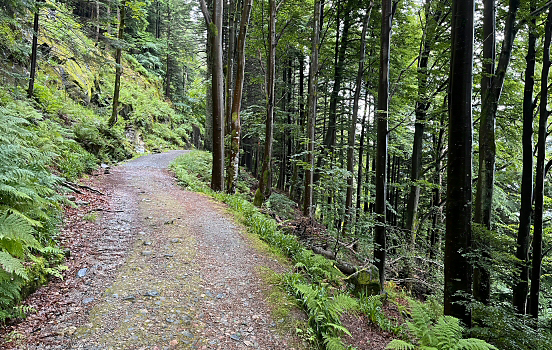 Through the troll forest.
Through the troll forest.
I walk down through the forests near Fløyen. It’s eerily quiet, almost too perfect. Waterfalls trickle like secrets, mossy trails wind between trees that look like something out of a Viking movie, and for a moment I feel blissfully alone (except for the existential dread that somewhere a mosquito is probably plotting its attack). I walk past the largest tree of Norway, or so the sign says.
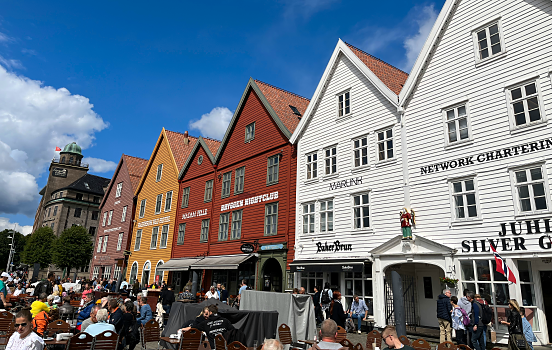 Bryggen. Not for the faint of heart.
Bryggen. Not for the faint of heart.
So what’s up in Bergen these days? At first glance, the city seems to be staying a lot in its past. I exit the forest and stumble straight into the tourist apocalypse at Bryggen, a reconstructed area acting like a museum of the Hansa age. But the age-old magic is obliterated by loud people in brightly colored wind-proof jackets. I foolishly to pass through the narrow streets in the area, pushing through the crowds while getting hit in the head by a selfie stick.
North of Bryggen is the open-air museum Old Bergen with historic wooden buildings. Bergen is full of tiny streets such as Knosesmauet, which feels like they would have looked the same a hundred years ago.
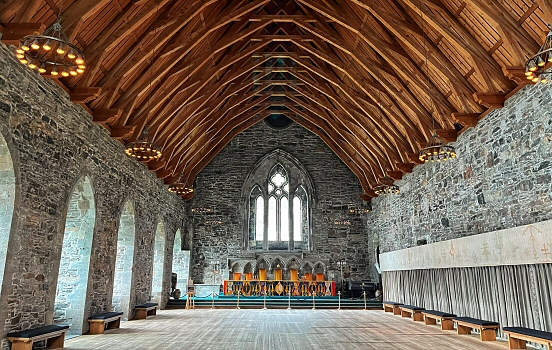 Håkonshallen – hall of the mountain king.
Håkonshallen – hall of the mountain king.
I run away from the frenzy and find my way to Bergenhus Festning, another reminder of the past. This was the the royal palace when Bergen was still the capital of Norway, until about 1300 AD. I walk past the tall tower of Rosenkrantztårnet into Håkonshallen, an impressive hall fit for a king. Unfortunately the old buildings were razed in an explosion 1944, but have since been rebuilt.
The nearby old fortress areas of Sverresborg and Fredriksberg turned out to be mostly overgrown with only remnants left of the once great walls.
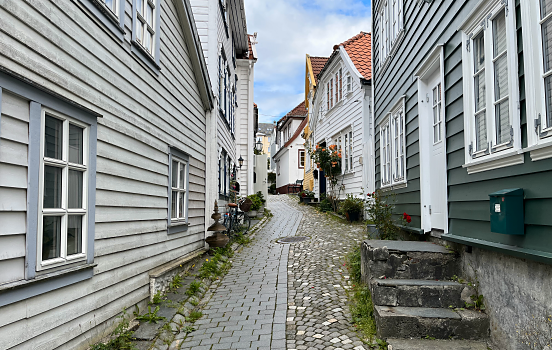 Lots of narrow streets in the city.
Lots of narrow streets in the city.
Even some of the nightlife appears to be leaning on the past. There is a small room inside Grand Hotel Terminus which houses the Bar Amundsen. The polar explorer Roald Amundsen held his last press conference in this bar 1928, where also the last known photograph of him was taken before his journey to Svalbard where he went missing the next day. I sit down at the counter with a fine single malt and soak up the ambience in the empty room, trying to imagine the grizzled old men sitting in here almost hundred years ago.
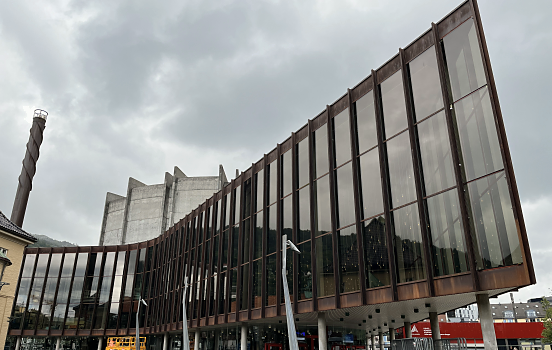 Sharp corners at Grieghallen.
Sharp corners at Grieghallen.
But all is not lost in the past. I want to envision a Bergen in the present, it is after all the second-largest city in Norway. So I walk all across the city in the search for modern gems. I visit trendy espresso cafés proudly roasting their own beans, fashionable wine bars boasting only the best Italian wines, a large aquarium with otters, eclectic cocktail bars that only use QR codes (which made an older patron go berserk), artisan pastry stores and a hip vinyl record store doubling as a craft beer mecca. To top it all off, I find a black metal pub with a shrine to the murdered Euronymous of Mayhem and shady altar of worship to Dimmu Borgir.
Bergen, a place where past and present brawl in the streets. Such is the way of this city between mountains and fjords.

Comments
No comments yet.
Leave a reply